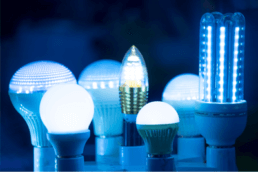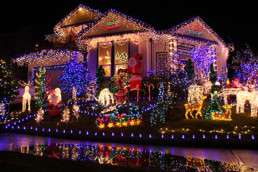What are the Advantages of LED Lightbulbs?
As more emphasis is being placed on energy efficiency and environmental awareness, more homeowners are eschewing traditional incandescent, fluorescent, and halogen light bulbs in favor of light-emitting diode (LED) light bulbs to illuminate their homes. According to Bobvila.com, LED bulbs may still be more expensive than traditional light bulbs, but their energy-efficient operation will save you money in the long run.
For a better understanding of just how energy-efficient LED bulbs are, let’s compare their wattage to those of incandescent bulbs. An LED bulb is capable of reaching the same brightness of an incandescent bulb at just a fraction of the wattage. For example, a 7- to 9-watt LED bulb emits the same brightness as a 40-watt incandescent bulb, while a 16- to 20-watt LED emits the same brightness as a 100-watt incandescent bulb. Not only will you spend less on electricity, you’ll also spend less on new bulbs, as LEDs last longer than incandescent bulbs.
Bobvila.com also points out that although LED bulbs were only available in a harsh white color in the past, modern bulbs are available in three different color temperatures – warm white, soft white, and bright white. Warm white tends to be calmer and suited for bedrooms, living rooms, or really anywhere in your home where you just sit and relax. Soft white light is more vibrant and suited for work areas such as kitchens, garages, and basements, while bright white light is typically reserved for outdoor security systems and bright workshops. In the end, Bobvila.com settled on five LED light bulbs which they recommended as the best available – Phillips 60-Watt Equivalent LED, Cree 40-Watt Equivalent LED, Cree 60-Watt Equivalent Daylight LED, Phillips Hue White LED, and Phillips 60-Watt Equivalent Soft White LED.
When it comes to maintaining the quality and consistency of brightness and color temperature of an LED lightbulb, an innovative light measurement solution by Konica Minolta Sensing is indispensable. A handheld instrument such as the CL-200A or CL-500A can measure the color temperature, illuminance, chromaticity, excitation purity, and dominant wavelength of various light sources, and allow for a more efficient and accurate light evaluation process. Discover the difference that a light measurement instrument by Konica Minolta Sensing can make today!










